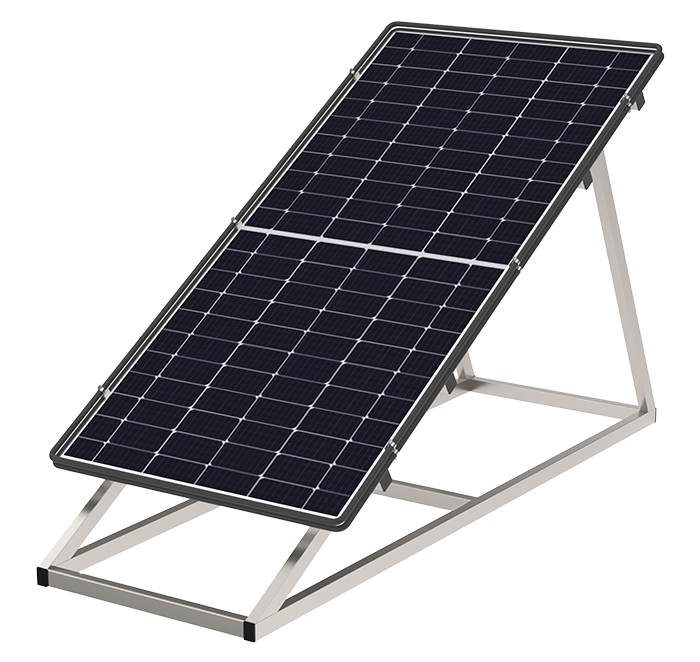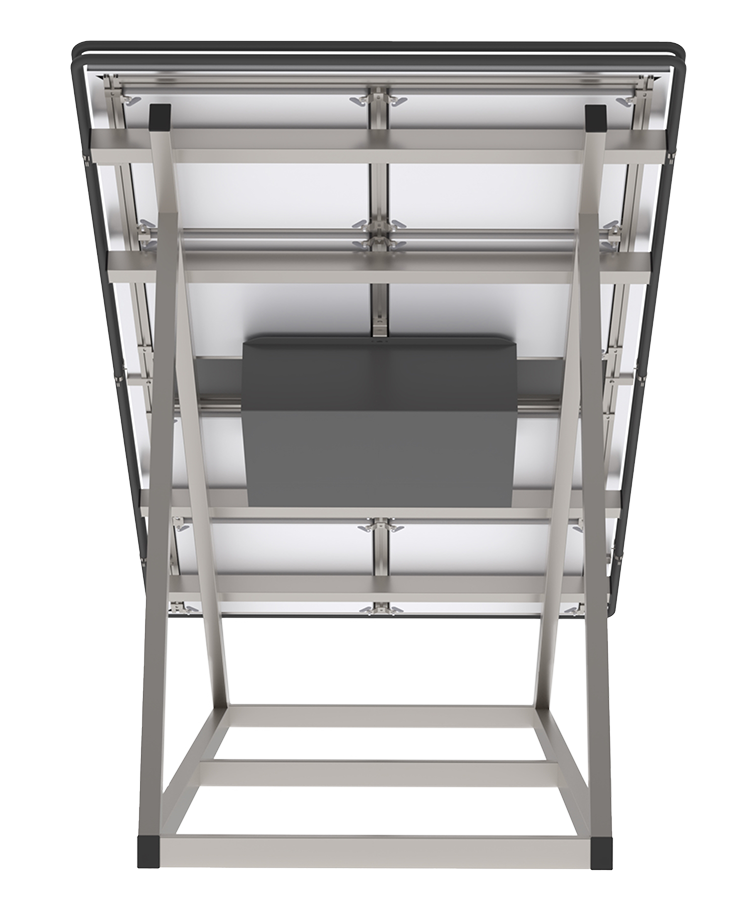GREEN INDEPENDENCE TECHNOLOGY
The ideal solution to solve
energy problems
is to imitate nature.
The idea explained simply.
The New Artificial Leaf is an evolution of solar panels, inspired by the process of photosynthesis.
Just like a natural leaf, it:
Purifies wastewater and desalinates seawater.
Generates energy from sunlight.
Stores this energy locally in chemical bonds (in our case, as green hydrogen)
All of this happens in a way that is:
Decentralized
Economical
Accessible
Completely independent
of the power grid
On average, a traditional photovoltaic panel converts:
of the energy
radiated by the
Sun in electricity.
of the energy is
dissipated in heat.
How does the NAL work instead?
Soleidon produces green energy and uses dissipated heat to purify wastewater or desalinate seawater
Thanks to the cooling effect of the water, its efficiency and lifespan are enhanced.

Benefits of Thermal Membrane Distillation:
- Does not produce environmentally harmful waste
- Reduces the costs of water supply and/or disposal
The solar panel produces electricity which can be used immediately.
Any surplus solar electricity (or all electricity, depending on the customer's needs) is stored by producing green hydrogen through an electrochemical cell integrated into the panel, which uses an anion exchange membrane (AEM) and low-noble metal catalysts.

The reduced content of noble metals in the catalytic system significantly reduces both hydrogen production and maintenance costs.
The competitive advantages of NAL.
In today’s market, there are various solutions to address the major challenges posed by dependence on fossil fuels, water scarcity, and the intermittency of renewable energy sources.
The New Artificial Leaf (NAL) is an innovative device designed to enhance the efficiency of existing tools used to tackle these issues.
The main innovations
NAL introduces multiple innovations, concentrated in 5 key areas:
NAL features an innovative 1:1 ratio between electrochemical capacity and installed photovoltaic power, compared to the traditional 1:3 to 1:5 ratio found in industrial electrolyzers.
While conventional systems are unable to take advantage of photovoltaic production peaks for hydrogen production, NAL fully exploits solar intensity peaks, optimizing available energy and reducing waste.
Furthermore, traditional centralized systems rely on grid electricity at night to compensate for daytime inefficiencies. In contrast, NAL—operating off-grid—can achieve comparable annual productivity with the same photovoltaic installation.
Thanks to its integrated solar capacity, NAL can power its Electrochemical Module independently of the grid, producing green hydrogen while significantly reducing electricity-related operating costs (OPEX).
Our innovative design ensures operational flexibility and cost-efficiency through the use of low-cost materials, including a low-noble-metal catalytic system and readily available control electronics.
Nal uses wastewater to produce green hydrogen, lowering operating costs while also generating extra purified water. This purified water reduces industrial costs related to the purchase and disposal of technical water.
Any surplus can be resold, further improving the hydrogen cost structure and enhancing the economic and environmental sustainability of the system.
Discretization and miniaturization of the EC reactors allow the use of low-cost power electronics and improve system resilience in cases of failure. These advantages translate into lower CAPEX and OPEX, reducing the Levelized Cost of Hydrogen (LCoH) and increasing affordability of technology.
The use of an economic catalytic system reduces management and maintenance costs. Our noble-metal-free catalyst is around 20 times less expensive than commercial platinum-based catalysts and offers comparable performance, ensuring sustainable and efficient hydrogen production.
Direct-solar-water-splitting
The New Artificial Leaf (NAL) system enables direct solar-water-splitting—that is, the direct production of hydrogen from solar energy without the need for intermediate storage buffers (such as batteries) or energy-intensive systems (like conventional electrolyzers).
This approach enables extended, stand-alone, on-site green hydrogen production through the integration of the photovoltaic (PV) system with the electrochemical system, in a photo-electrochemical (PV-EC) configuration.
Compact and modular design
NAL is designed for installation anywhere with solar exposure—from urban infrastructure to remote industrial areas—offering unprecedented flexibility and adaptability to specific customer needs.
The modular system supports various configurations, from a single panel to fully integrated systems. NAL installations can be customized by adjusting the energy outputs (electricity/hydrogen and water) based on the specific requirements of each customer.
The system operates at low pressure, low voltage, and low temperature, ensuring safe conditions and aiming to function with the simplicity of a household appliance. It also features multiple cells with the same function (redundancies), which ensure high operational continuity, compensate for potential malfunctions, and maintain consistent, reliable performance.
Water purification and green hydrogen production occur through the coupling of two modules in a single technological asset—an approach that is innovative compared to current market offerings. The modular and "open" nature of technology enables seamless integration with other systems and across a wide range of application.